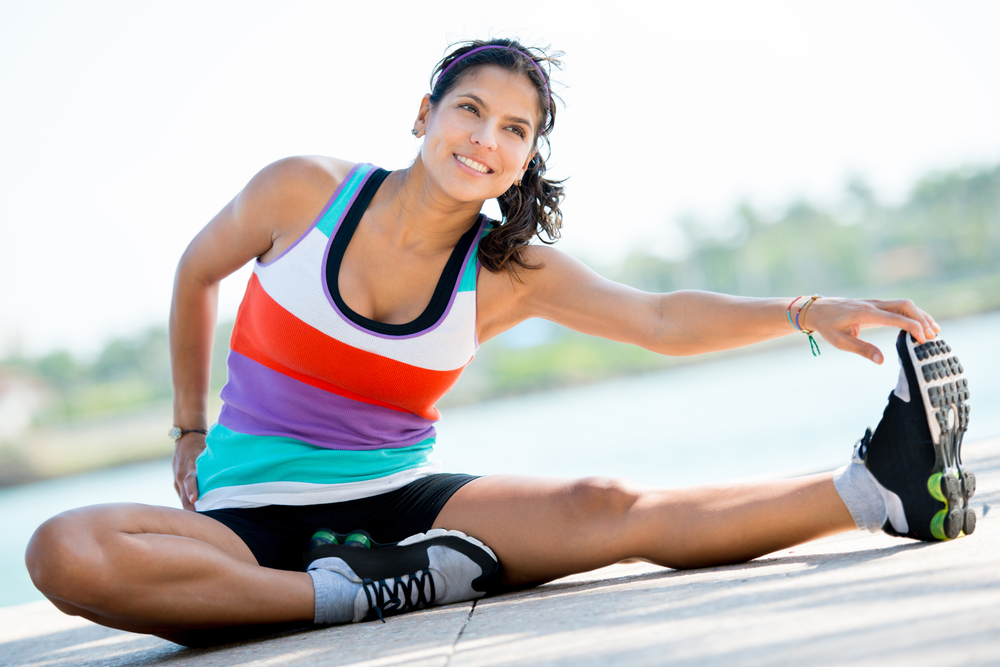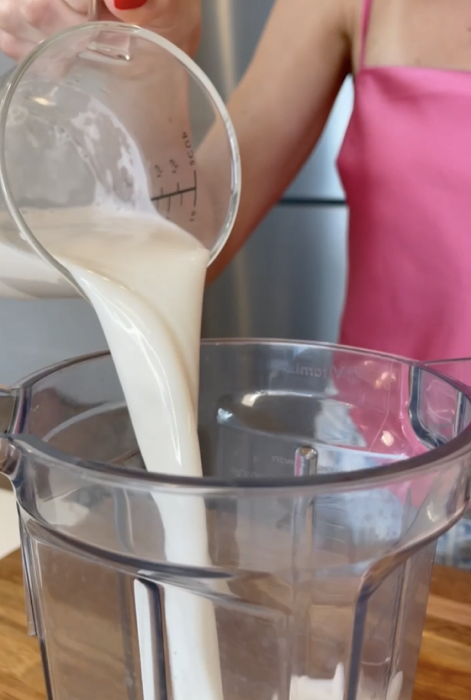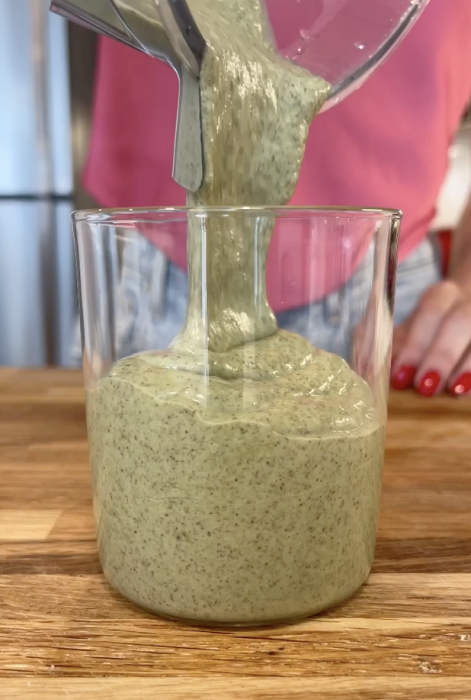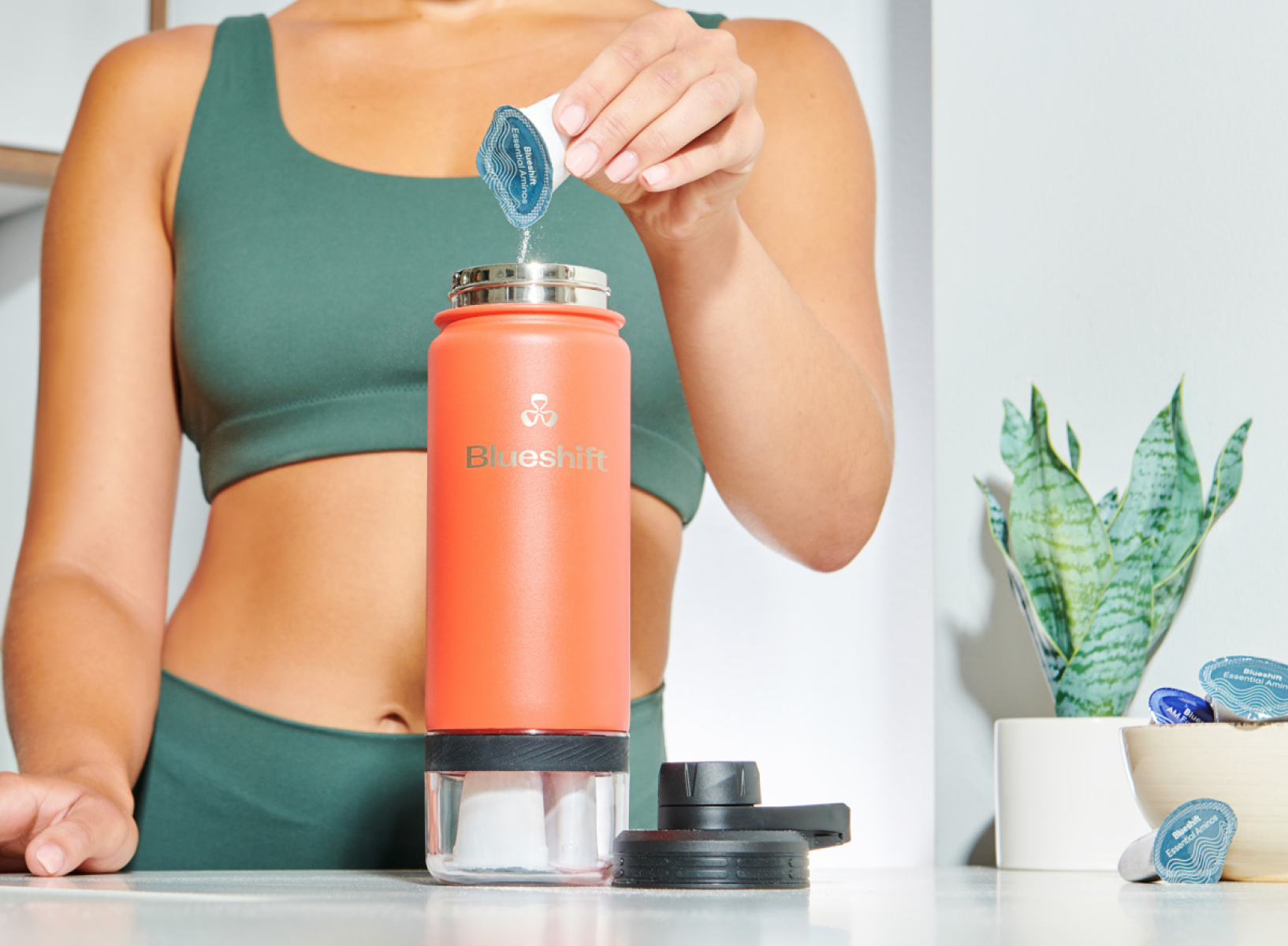Stretching: the thing we should be doing, but most of us overlook. There’s no question that everyone can benefit from a regular stretching routine, but if you have a regular exercise habit, it’s especially important that you have an accompanying stretching habit. Let’s show your muscles some love with five simple stretches to stay flexible, improve mobility, and most importantly, feel your best in your body.
1. The Pigeon Stretch
Got lower back pain? It may be the result of a tight piriformis, a small but mighty muscle that plays a key role in hip rotation and stability. A tight piriformis can put unnecessary stress on the lower back. The pigeon stretch (and any of its variations) are a great way to loosen up and alleviate that pain.
How to approach the pigeon stretch:
- Start in a tabletop position on your hands and knees. Your wrists should be directly under your shoulders, and your knees directly under your hips.
- Bring your right knee forward and place it behind your right wrist. Your right foot should be angled towards your left hip with your leg at a 90 degree angle.
- Slide your left leg back, keeping your left knee on the ground. Your left leg should be straight behind you.
- Keep your hands on the ground in front of you for support, and if you're comfortable, hinge forward over your right leg to feel the stretch.
- Hold the stretch for about 30 seconds, focusing on deep breathing and relaxing into the pose.
- Repeat on the other side, bringing your left knee forward and placing it behind your left wrist.
Where should I feel it?
In the hip, lower back, and glutes.
Cues to remember
Keep a straight back, maintain a 90 degree angle in your front leg, and remember—pressure is the goal, not pain.
Variations
If you’re more comfortable sitting tall instead of hinging over your leg, that’s okay! The more you practice this stretch, the easier it will be for you to sink deeper into the stretch. This stretch can also be performed standing up with the front leg on a bed, table, or bench.
2. The Couch Stretch
Runners, golfers, people with desk jobs—this is your stretch, and all you need to perform it is your couch or desk chair. It’s a simple and effective way to open up your quads and hip flexors while also improving your posture.
How to approach the couch stretch:
- Set a pad or pillow directly in front of your couch or elevated surface to use as a rest for your knee.
- Extend your left leg back and place your foot on your couch or elevated surface, bending the knee so that it touches the pad or pillow beneath you.
- Push your glutes back towards your heel and tilt your pelvis forward.
- Hold the stretch for 30 seconds.
- Repeat on the other side, switching your legs so your right leg is extended back and your left foot is forward on the floor or mat.
Where should I feel it?
Your quads (the front of your thigh) and in your hip flexors.
Cues to remember
Strong core, hands on your hips for balance.
Variations
If this stretch feels too aggressive with your foot on a couch, try a lower surface or even start with your back foot planted on the floor and gradually work your way up.
3. IT Band Stretch
Yet another impact of sitting for long periods of time is tightness in the IT band and the TFL (tensor fasciae latae). In layman’s terms, if you’re experiencing hip discomfort, you’re probably dealing with tightness and shortening of the TFL and IT band. Incorporating this stretch into your daily routine will help open your hips and relieve pain.
How to approach the IT band stretch:
- Stand with your feet about hip distance apart in front of a countertop, table, or railing—any surface about level with your mid-thigh or hips.
- Cross your left foot behind your right leg, using the right foot as a kickstand.
- Lean forward against your stable surface, resting your hands for balance.
- Keeping your chest tall, push your hips out towards the left, letting the right knee bend gently and opening up the left hip.
- Hold for 30 seconds and repeat on the other side.
Where should I feel it?
In the upper thigh and hips.
Cues to remember
Keep your chest proud and your back flat, and don’t be afraid to bend your stabilizing knee!
Variations
If you’re having trouble feeling this stretch, try this variation: lie on your back and cross your legs, placing the left leg on top/on the outside of the right. Keep your hips grounded and gently apply pressure with your left leg until your right leg falls inward. You’ll feel the stretch on the outside of your hip.
4. Calf Stretch
Runners, walkers, and anyone with foot pain can benefit from this quick and simple calf stretch that can be performed almost anywhere.
How to approach the calf stretch:
- With your left foot, rest your toes on a box, stair, or foam roller, keeping your heel on the ground.
- Bend your right knee and lean into the stretch, keeping your back straight. You should feel a stretch in your left calf muscle.
- Hold the stretch for 30 seconds, or until you feel a release in the tension. Repeat on the other side.
Where should I feel it?
Along the calf of the leg that is resting on the box, stair, or other elevated surface.
Variations
Try standing on a step or box and putting one foot behind you, keeping your toes on level while dropping the heel. This reverse version of the same stretch allows some people to feel a deeper stretch.
5. Forearm Stretch
Our arms often get neglected during stretching routines, so we couldn’t close out without sharing one of our favorite easy upper body stretches. This super easy stretch can be done anywhere—in the car, on the go, at the grocery store…wherever you are, if you have 30 seconds to spare, this simple stretch can alleviate and prevent elbow pain, especially for those of us who work at a desk. Try it now—take a scrolling break and give your wrists and forearms some love!
How to approach the forearm stretch:
- Extend your right arm in front of you with your palm facing the ceiling.
- With your left hand, gently push down on your four fingers (everything but the thumb) and hold for 30 seconds.
- Turn your palm to face the floor and complete the stretch in a similar way, pulling your fingers downward and toward your forearm.
- Repeat the stretch on the other side.
Where should I feel it?
Your inner and outer forearm.
Cues to remember
Apply pressure from your fingers, not from your hand, to avoid putting too much pressure on your wrist.
Creating your stretching routine
Regardless of who you are, what you do for work, and what your exercise routine looks like, a daily stretching routine can help you feel more comfortable in your body and increase your mobility. Try starting your day or ending your bedtime routine with a five minute stretching routine incorporating these five stretches. We promise your body will thank you.










